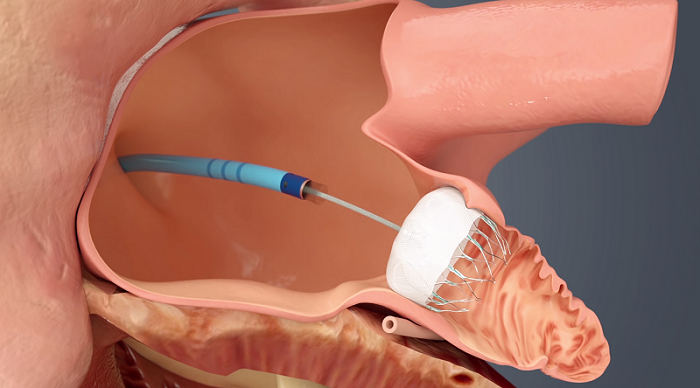Left Atrial Appendage Closure (LAAC)
A Minimally Invasive Procedure to Prevent Stroke
The left atrial appendage of the heart is a sac-like pocket located in the wall of the heart’s top chamber.
In people with abnormal heart rhythms such as atrial fibrillation (Afib), blood can pool inside the left atrial appendage, causing blood clots. If these blood clots travel through the body, they could lead to a transient ischemic attack, a stroke, or a blood vessel blockage called an embolism.
Patients with Afib are often prescribed anticoagulants (blood thinners) to prevent blood clots from occurring, but these medications are not appropriate for everyone. A nonpharmacological option is available for patients with nonvalvular Afib who are at high risk for stroke: left atrial appendage closure (LAAC).
LAAC is a minimally invasive procedure that seals off the left atrial appendage of the heart to prevent blood from pooling and creating blood clots.
Though the left atrial appendage serves an important role during the development of the heart, it seems to serve no useful purpose in adults, so blocking it off will not cause any ill effects.
If you are already planning to undergo a cardiac surgery, your medical team may advise surgical removal of the left atrial appendage instead. Talk with your doctor about the solution that is right for you.
Do you have a question? Request more information and we will connect you with an RWJBarnabas Health cardiovascular expert.
An Alternative to Blood Thinners
Blood thinners are usually the first line of defense for people at risk for stroke from blood clots that may develop in their heart. But blood thinners have risks, and may not necessarily be well tolerated by some people. The LAAC procedure's advantages over blood thinners are that it:
- Does not require regular blood tests.
- Does not require restrictions on food or drink.
- Removes the risk of excessive bleeding that exists with the use of blood thinners.
- Lasts forever; the devices used are permanent and do not need to be replaced.
There are several options and devices that can be used to seal off the left atrial appendage. The most common device is called the WATCHMAN device.
WATCHMAN Device Implantation
The WATCHMAN device is a small, parachute-shaped device that is implanted percutaneously, or through the skin. General anesthesia may be used.
A doctor threads a catheter through a blood vessel near the groin and up through the heart to the left atrial appendage. The WATCHMAN device is delivered through the catheter and plugs up the opening.
In time, tissue will grow over the device and hold it in place. The WATCHMAN device will never need to be replaced.
The procedure to implant the device takes around one hour.
The image below shows the device being placed snugly in the opening of the left atrial appendage, inside the heart.

Learn More
Do you have a question? Request more information and we will connect you with an RWJBarnabas Health cardiovascular expert.
